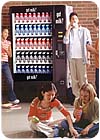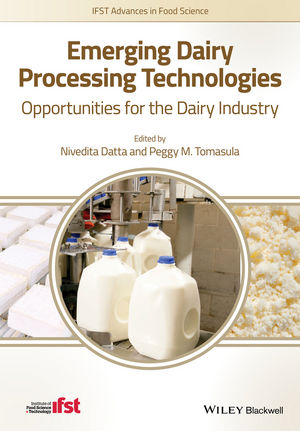
The nation's epidemic of overweight, undernourished and sedentary youth is leading to interventions in schools nationwide to help develop healthy lifestyle behaviors. For example, the 2004 Child Nutrition and WIC Reauthorization Act mandates that schools find ways to combat childhood overweight and to improve nutrition. By the 2006-2007 school year, the Act requires that each school district participating in federal school breakfast and/or lunch programs have a local wellness policy in place that addresses nutrition standards for all foods and beverages in school, physical activity, and nutrition education. The goals of school wellness policies are also consistent with two important steps called for in the 2005 Dietary Guidelines for Americans (2005 DGAs): increasing intake of fruits, vegetables, whole grains, low fat and fat free milk products, and increasing physical activity.
The Need to Improve Children's Health
Childhood overweight affects more than twice as many children and almost three times as many adolescents as in 1980. Among children ages 6 - 19 years, 16% are overweight and 15% are at risk of overweight. Poor eating habits (e.g. increased intake of calories from nutrient-poor foods and low intakes of nutrient-rich foods), and lack of physical activity are causes of childhood overweight. The 2005 DGAs identify five nutrients of concern for children and adolescents-calcium, potassium, magnesium, fiber and vitamin E. In particular, children's diets are low in calcium. Recognizing that most people need to consume more dairy products in order to achieve recommended intakes of many of these and other nutrients, the 2005 DGAs stress the need to consume three servings a day of low-fat and fat-free dairy products and lists dairy products among "Food Groups to Encourage." Dairy foods like milk, cheese, and yogurt are naturally nutrient-dense foods that provide more than 60% of the calcium intake for persons less than 19 years of age and are also substantial contributors of potassium, magnesium, phosphorus, protein, and vitamins A, D, B12, riboflavin and zinc essential for children's growth and development.However, research indicates that milk consumption begins to decline after the age of approximately eight. According to the 2003 Youth Risk Behavior Surveillance study, 83% of high school students in grades 9-12 had not consumed three or more servings of milk/day. A study of more than 1,500 10-year-old-children found that those who drank the most sugary drinks had lower intakes of milk compared to those with low, or no sugary beverages intake. In 1945, Americans consumed more than four times as much milk as soft drinks. In contrast, in 1998, 2 1/3 times more soda than milk was consumed. A recent NIH consensus panel on osteoporosis attributes Americans' low calcium intake to "restriction of dairy products, a generally low level of fruit and vegetable consumption, and a high intake of low-calcium beverages such as sodas.
In a national survey, only those children consuming milk at lunch met or exceeded calcium recommendations, whereas those consuming soft drinks, juice or tea did not. A recent study also found that high school students who consumed more soft drinks had a higher risk of bone fractures than those consuming fewer soft drinks. The trend of declining milk consumption and increasing intake of high-energy, low-nutrient beverages among children and adolescents can contribute to nutrient shortfalls as well as increase the risk of chronic diseases later in life such as osteoporosis and hypertension. In addition to health consequences, children's unhealthy food choices and sedentary lifestyles can also have adverse academic and economic effects. A meta-analysis of nearly 200 studies including children and adults found that physical activity supports learning. For more information on the link between nutrition, physical activity, and weight and academic performance, see the report: "The Learning Connection: The value of Improving Nutrition and Physical Activity in Our Schools 2004,"www.actionforhealthykids.org.

Schools are Key to Improving Children's Health
In the 2002 U.S. Surgeon General's report, Call to Action to Prevent and Decrease Overweight and Obesity, schools are identified as a key site for taking action to improve nutrition and physical activity in order to help prevent childhood overweight.
Schools are an ideal setting for change because nearly all children are enrolled in school; schools have a unique ability to reach all children equally; promotion of healthy eating and physical activity has traditionally been part of the education experience; and research indicates a positive link between nutrition, physical activity and academic performance.
School meal programs, such as the National School Lunch Program and the School Breakfast Program, provide children with nutritional and academic benefits. However, many children do not participate, in part because of the increased availability and marketing of competing foods sold in schools. Many of these competitive foods and beverages are high-calorie; low nutrient-dense foods are easily available in schools (e.g. a la carte, snack bars, vending machines, school stores). The nutritional value of these foods are only minimally regulated at the federal level and students often purchase these foods in addition to or instead of school meals.
There is recent federal commitment, however, to markedly improve schools health and wellness environment. As part of the Child Nutrition and WIC Reauthorization Act of 2004, each school district participating in the federal meals programs must establish local school wellness policies that promote the health of students by the 2006-2007 school year. By law, local school wellness policies will have, in part, the following elements:
- nutrition standards for all foods and beverages available in schools during the school day; and,
- appropriate goals for nutrition education, physical activity, and other activities that promote student wellness.







